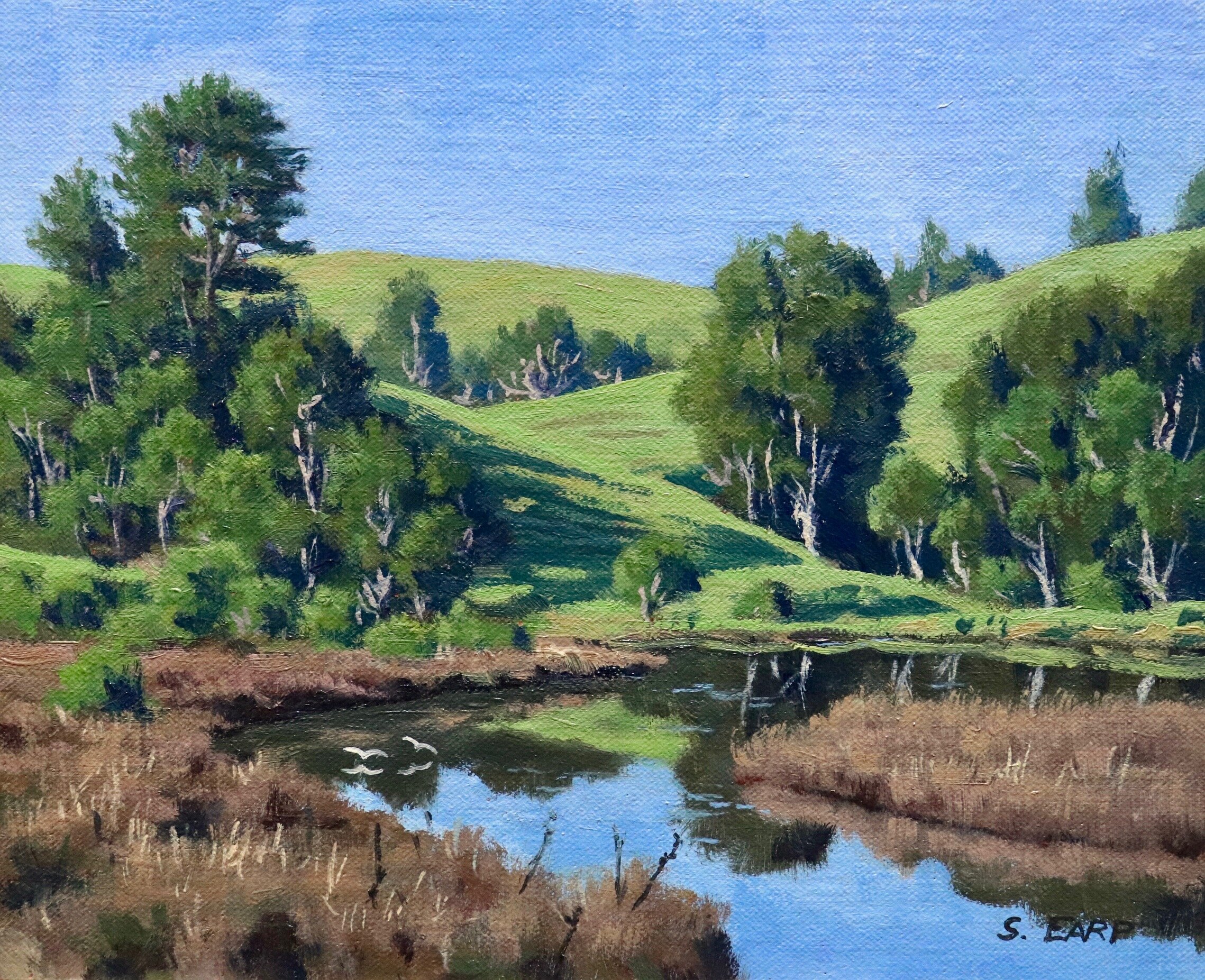
In this written painting tutorial I will show you how to paint this countryside scene. This painting originally started off as a plein air painting but after being sat on my shelf for a year I decided to add some detail to it.
Plein air painting (painting outdoors) is a great way to capture the atmosphere and aliveness of the subject you are painting. It will also improve your painting skills as painting outdoors really makes you observe the landscape. Many of my plein air paintings remain just that, loose, painterly and impressionistic but sometimes I add details to them in the studio.
Lets get into this painting.
Reference Photos
Feel free to use these photos if you would like to have a go at painting this art work.


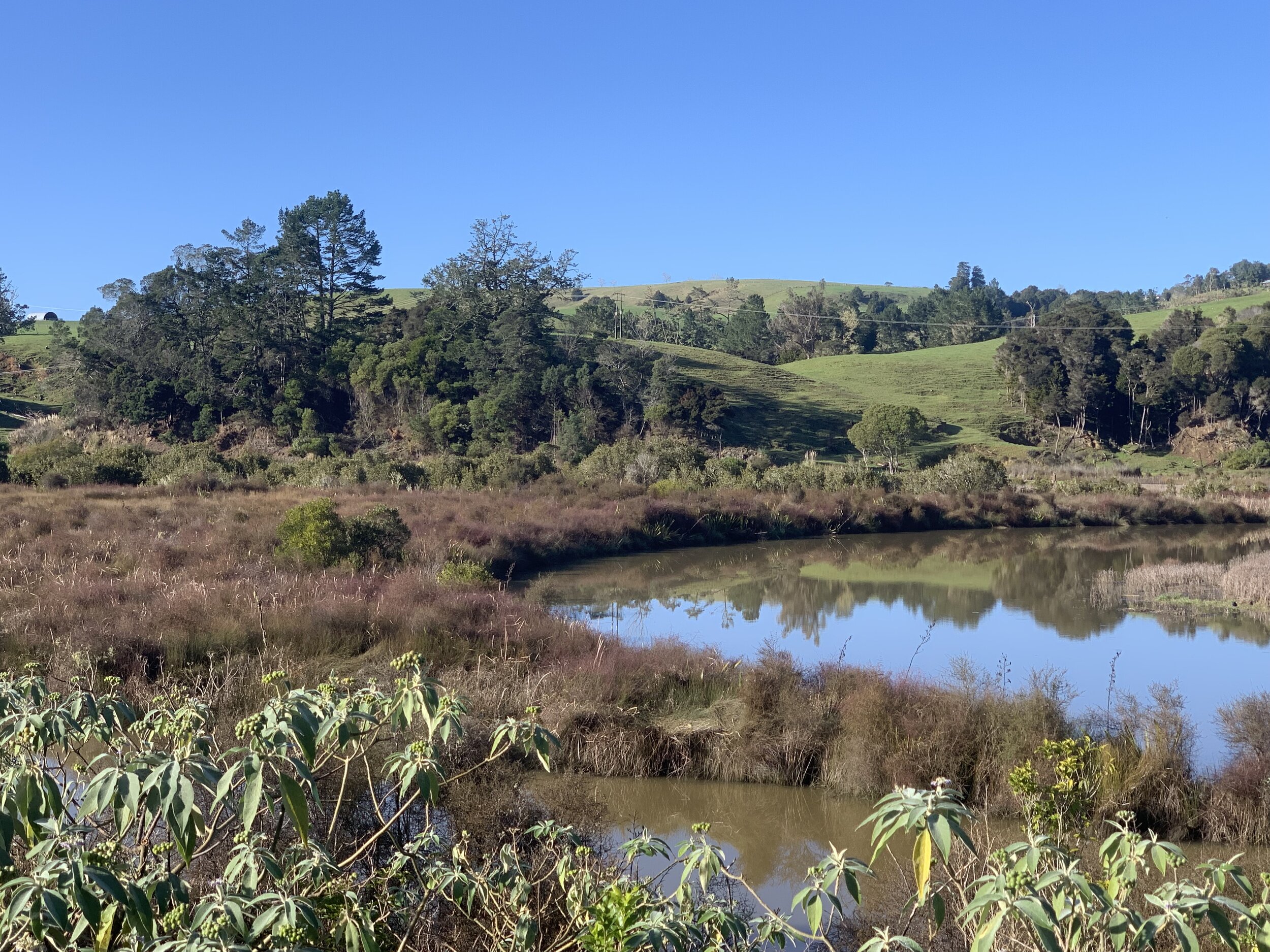
Composition
The design behind this painting follows an ‘S’ or compound curve composition. The main focal area is the large tree in the mid ground and river leads the eye towards it in an ‘S’ shape.
The ‘S’ or compound curve is a good failsafe composition to incorporate into a landscape as the curve implies motion and rhythm in the painting.
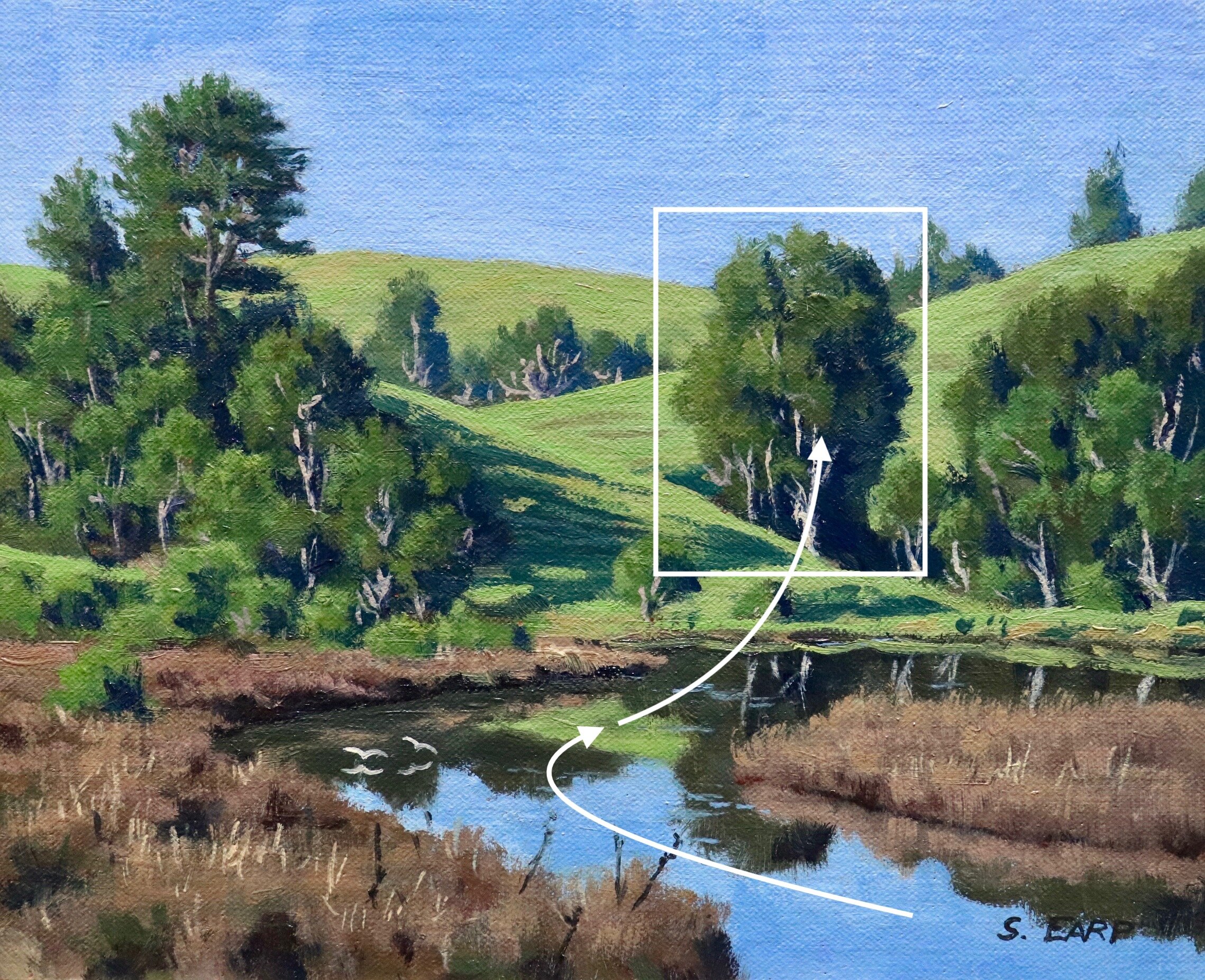
Colours
I am painting in oils but you can just as easily paint this in acrylics as well. The colours I used in this painting are as follows:
- Titanium white
- Burnt sienna
- Yellow oxide
- Cadmium yellow
- Cadmium red
- Quinacridone crimson
- Ultramarine blue
- Phthalo green
Brushes
Here is a list of the brushes I used in this painting:
- No.4 flat
- No.2 flat
- No.2 filbert
- No.1 round
- No.0 round
- No.00 round
- 1/4 dagger
Painting Tutorial
This art work began as a plein air field painting in a location along the Kawakawa River in Northland, New Zealand. Whenever I start a studio painting I use the exact same method of painting when I’m out in the field as when I am painting en plein air.
I am painting on a 8” x 10” linen panel that I toned with a layer of burnt sienna. The burnt sienna adds vibrancy to the painting.
I sketch out the composition using a No.2 round brush with burnt sienna mixed with Liquin Original (Liquin). I am using Liquin as a medium to thin the paint, it also has the advantage of speeding up the drying time.
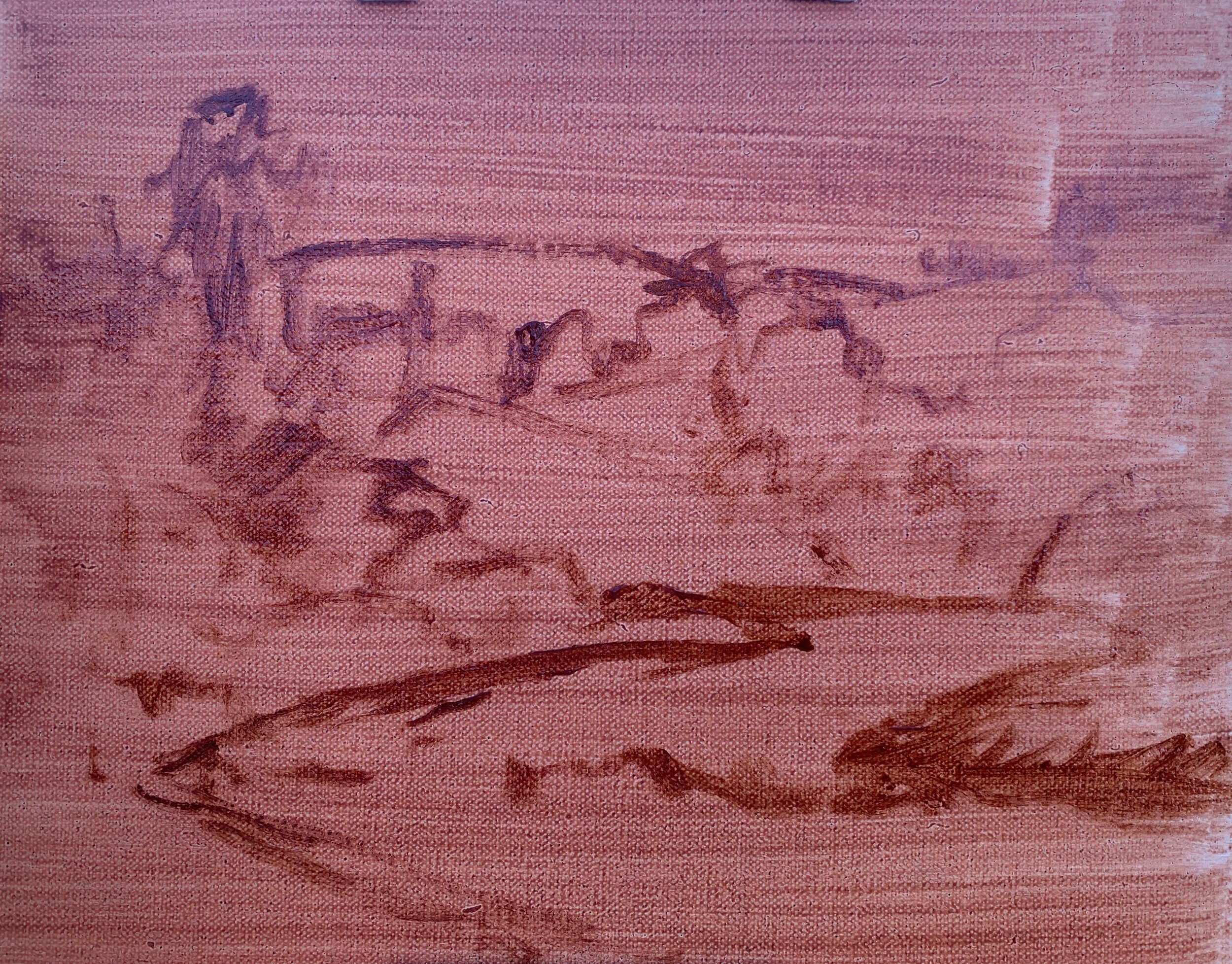
Once I have sketched out my composition I began the painting. The most important thing was to paint my dark values first, then it didn’t matter that the light was changing. The darkest values are found in the trees shadows.
The colours for the tree shadows include a mix of ultramarine blue, yellow oxide.
For the tree shadows in the background I used the same colours but mixed in a little titanium white to make the value lighter.
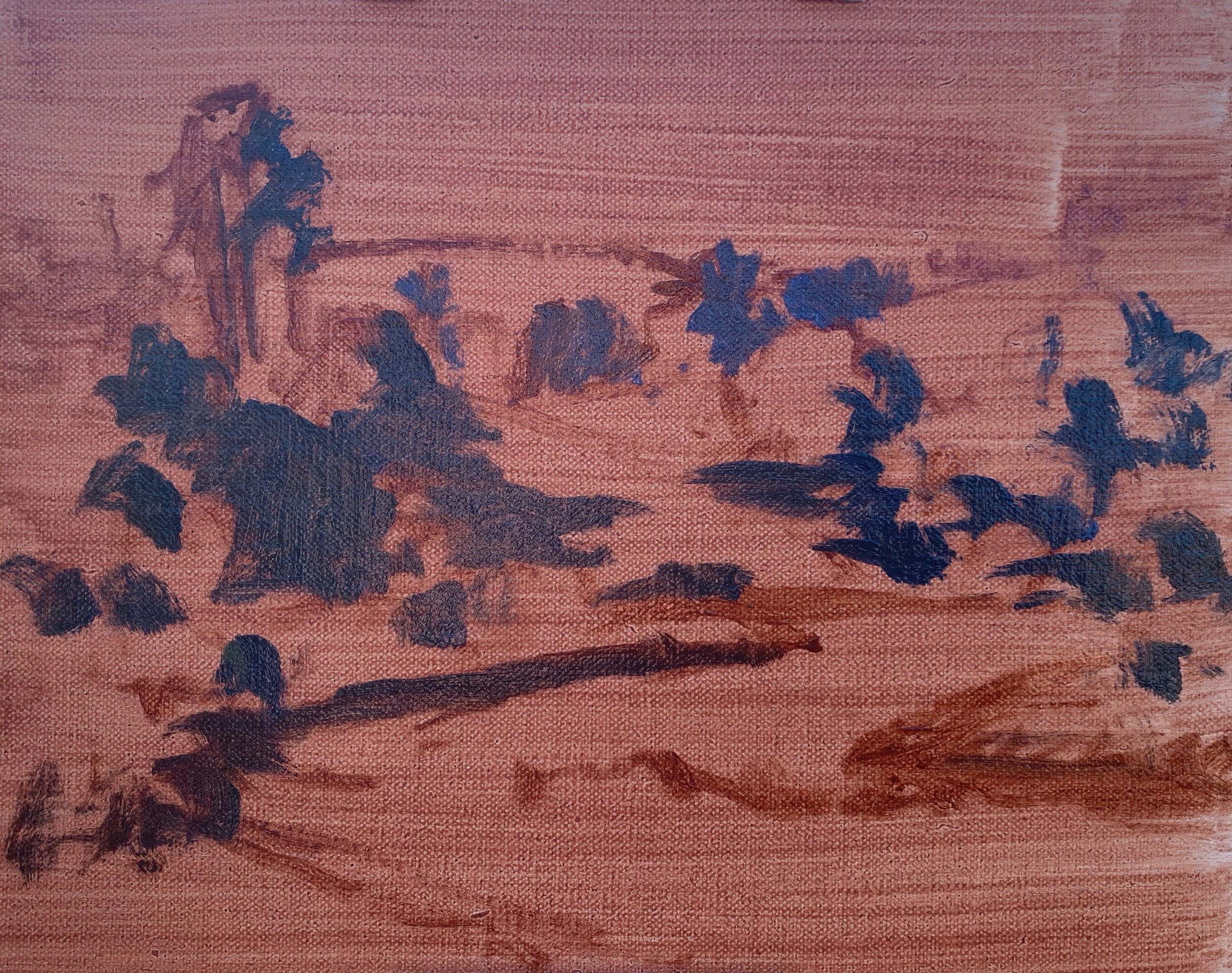
Once I painted my dark values I then painted the zone furthest away in this scene and that is the sky. For this I mixed ultramarine blue, phthalo green and titanium white. You will only need a small amount of phthalo green as it is a very strong colour. I use my sky mix for the the reflection in the water.
I painted the grass in the fields with a mix of ultramarine blue, yellow oxide, cadmium yellow, a little quinacridone crimson and titanium white.
Grass is one of the lightest values you will find in the landscape as well as the sky so keep this in mind when you are painting these elements.
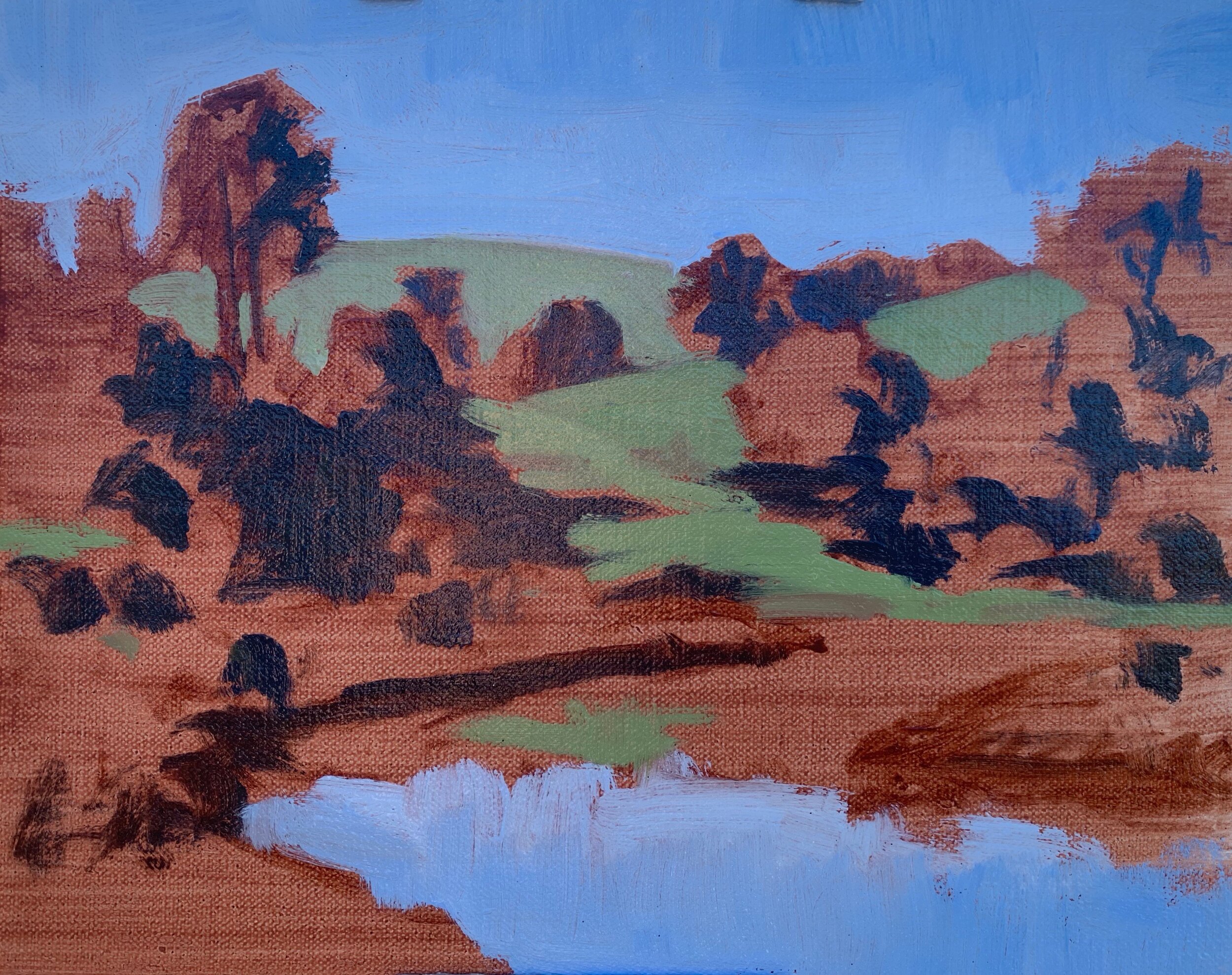
When painting trees and tree foliage keep in mind that they are often some of the darkest values you will find in the landscape.
I mix the colours for the trees starting off with ultramarine blue, yellow oxide. I then introduce a little phthalo green and cadmium orange for the pine trees. For the other native New Zealand trees I mix in a little cadmium yellow and quinacridone crimson to my existing green mix.
The reeds and grasses in the foreground are a crimson / brown colour and so for this I mix ultramarine blue, yellow oxide, quinacridone crimson and a little titanium white. I vary the amount of colours in the mixture to create different tones within the reeds.
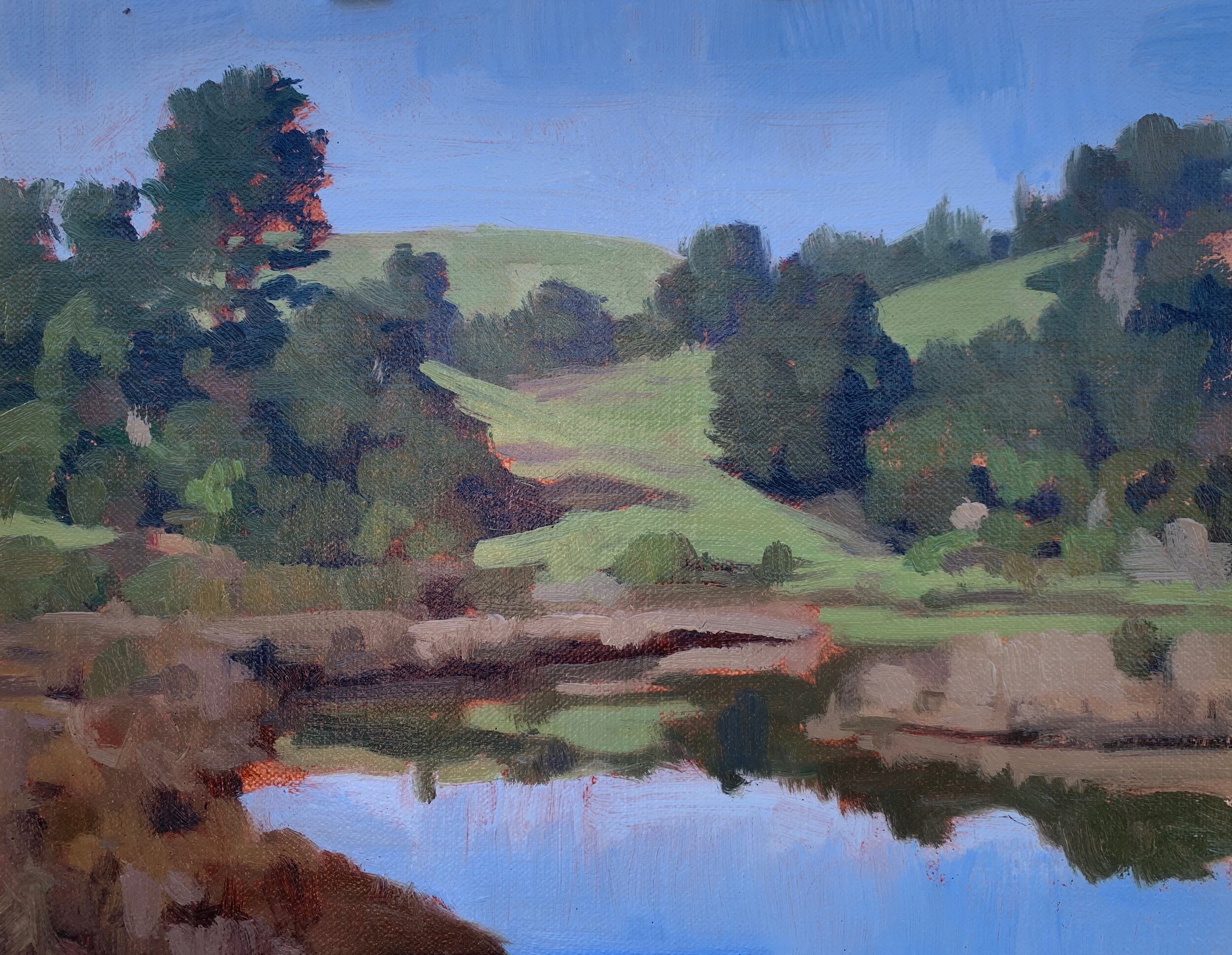
When I was out in the field I finished up the painting by adding a few final details such as the network of main stems and branches within the trees.
Once I took my painting home it sat on my shelf for a year until In decided to add some more detail to it in the studio.
Below is the painting photographed in the field when I had finished painting it en plein air.
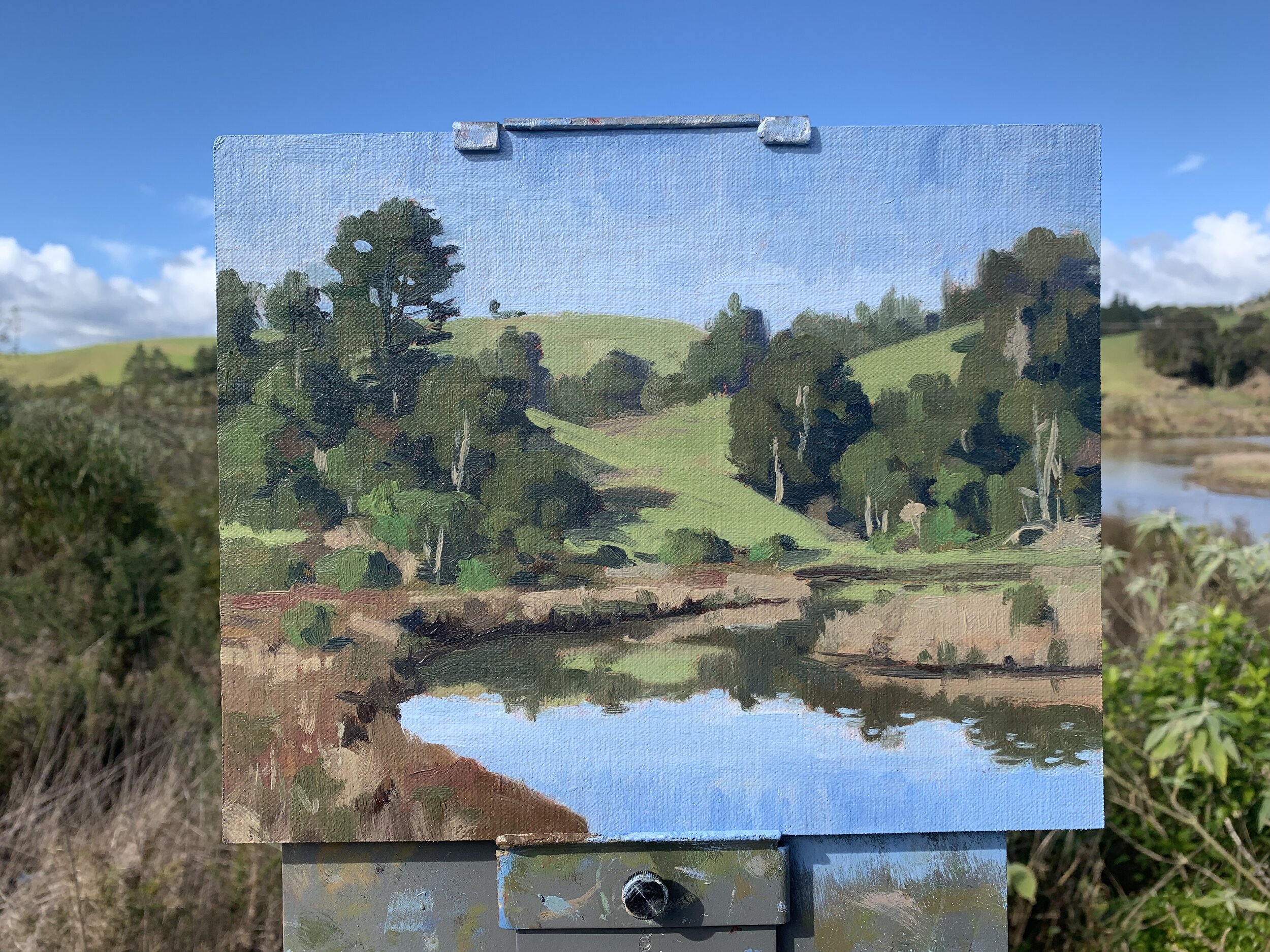
My painting with the view behind.

Back in the Studio
Essentially I am using the same colours that I used when I was painting outdoors in the field.
The first thing I started with was restating the dark values in the trees. I then used a 1/4” bristle dagger brush to paint the tree foliage. Dagger brushes are great for painting trees as you can use the flat / broad end of the brush for painting branches and clumps of foliage but you can also use the tip of the brush for fine detail.
I used the same colours I used out in the field for the tree foliage in light however I made each layer lighter in value but mixing in a little titanium white into my green mix or light value colours such as cadmium yellow and yellow oxide.
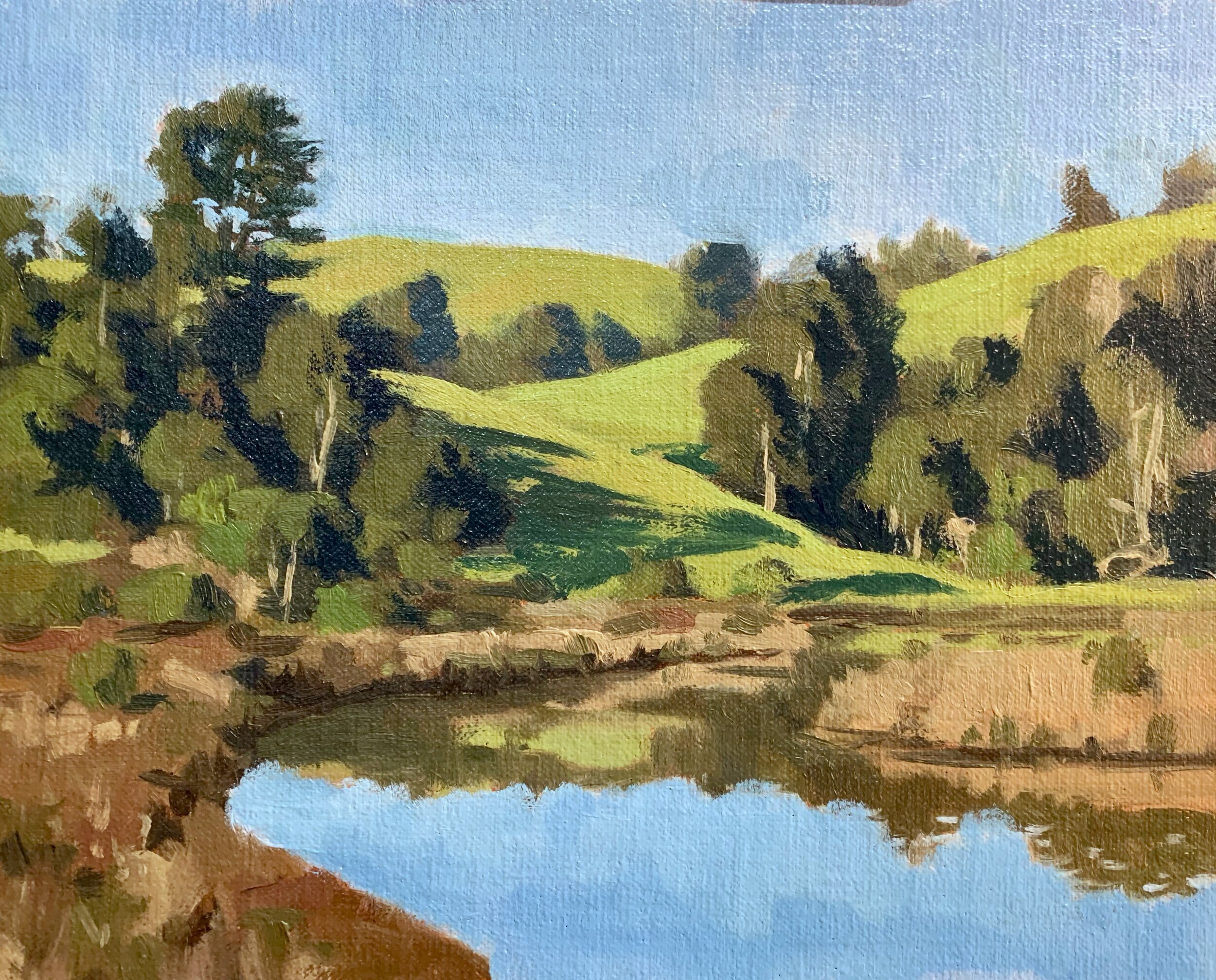
At this stage in the painting I had added much more details to the trees. My brushes are getting smaller and I was mainly using 1/4” dagger brushes and No.0 round brushes for the tree foliage, adding lighter layers of paint with each pass.
I moved the position of the river and made the large tree in the mid ground the focal area of the painting. Having looked at the painting for the last year I could see where improvements could be made to the composition.
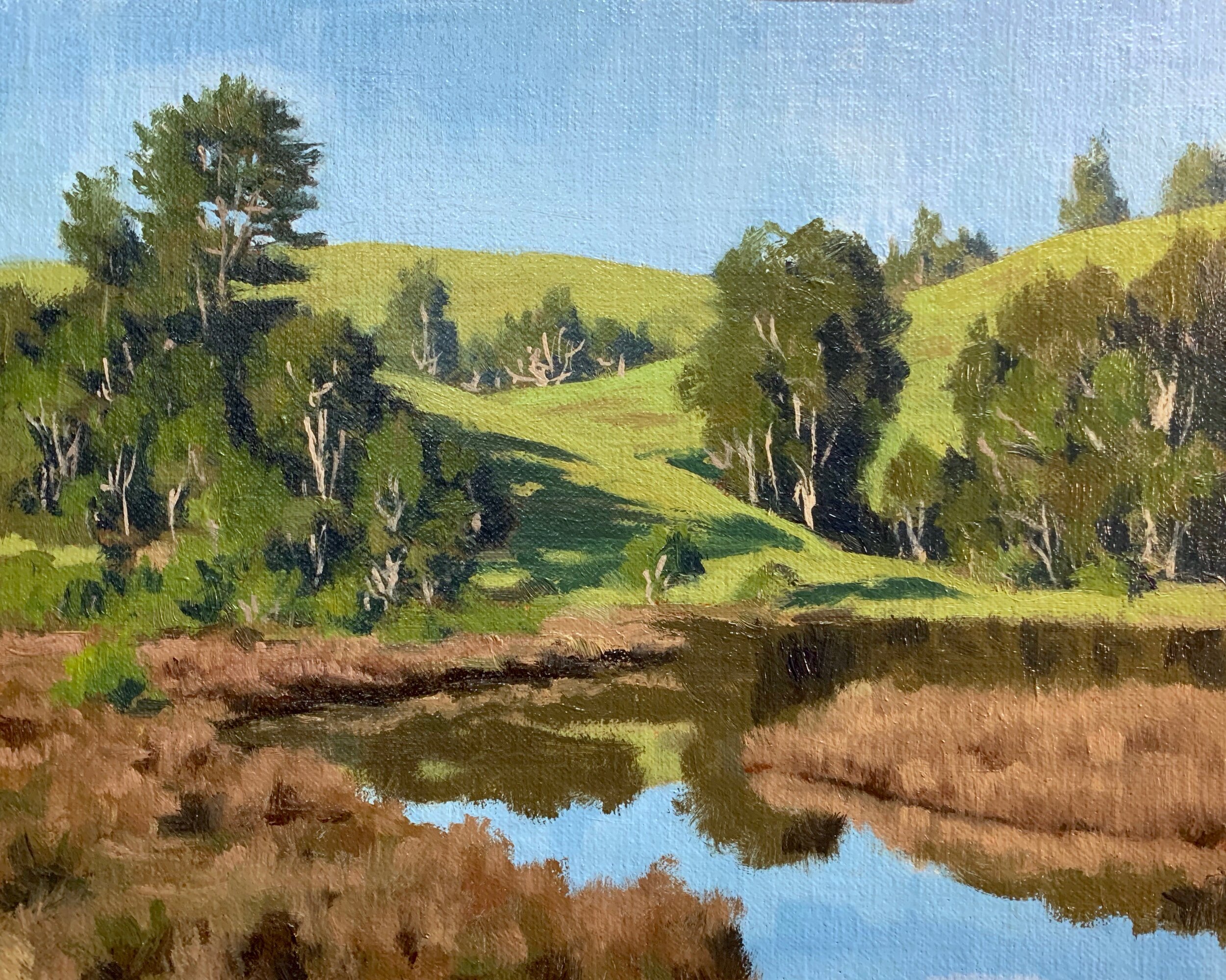
I use my 1/4” dagger brush to add a little detail to the reeds and grasses in the foreground and I make the value of the colour lighter. I’m still using ultramarine blue, yellow oxide and quinacridone crimson but I mix in more titanium white and more quinacridone crimson.
I brush the paint along the tops of the reeds in an upwards direction. This helps to feather the grasses.
I add more details to the foliage on the trees, painting the edge of the tree canopies with lighter colours.
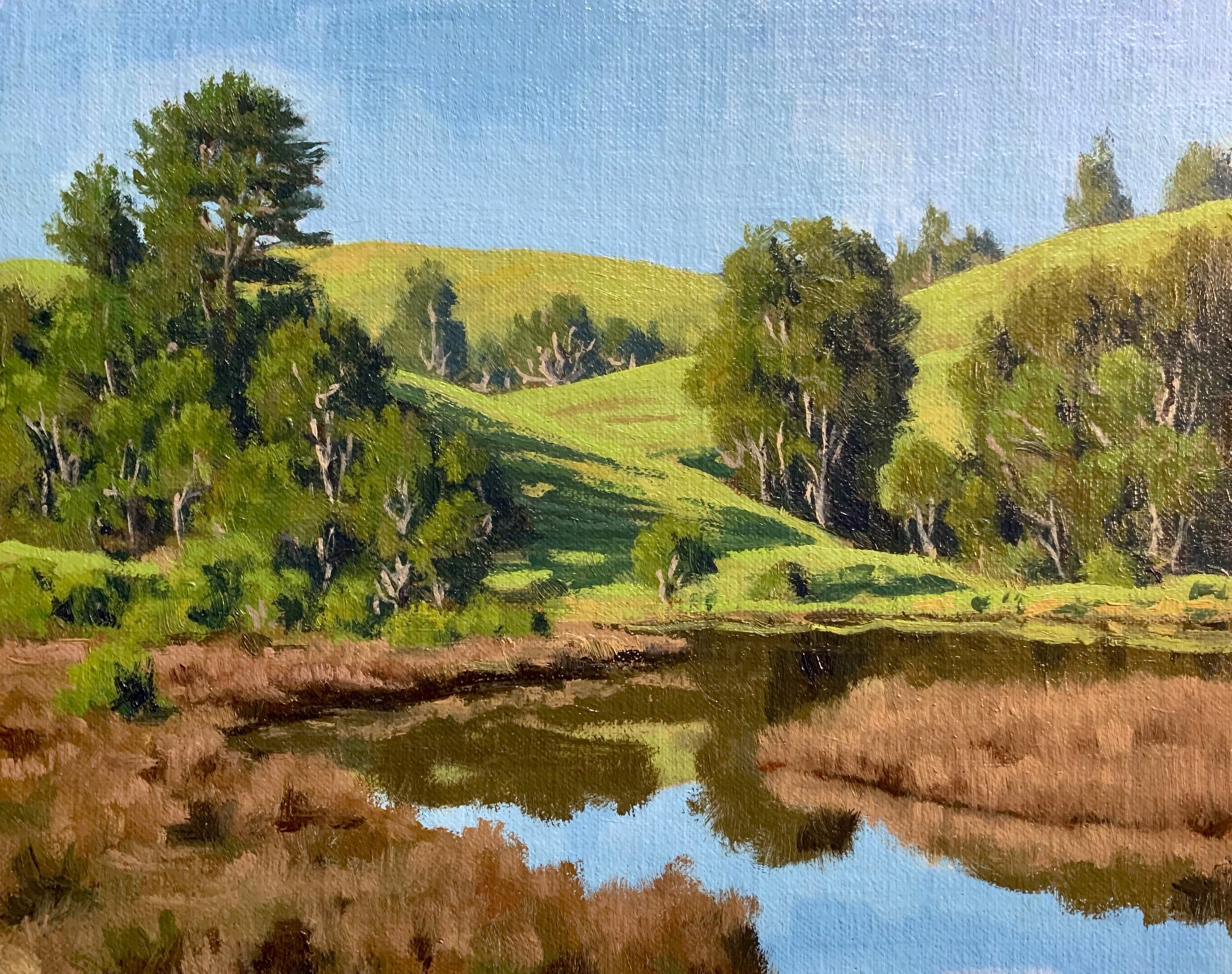
I finish up the painting by adding my lightest tones and value to the tree canopies and the grasses and reeds.
I use a No.00 round brush for fine detail such as the main stems in the trees and the reeds in the foreground. I also use this brush to paint a couple of birds above the water which adds some life to the painting.

Thanks for reading 😊
